FM sound generators can be considered as additive speech synthesis in the broad sense of the word. Sounds are generated in real time by combining operators with only two to six sine waves. Since each operator could have parameters such as envelopes, it was possible to freely control the sound from round to distorted tones just by how hard the keyboard keys were played. This expressive power is still applicable today. The figure below shows an example of a connection with three operators. The output operator is called the carrier and the others are called modulators. Only D is not FM modulated, so it is simply an addition of sine waves.
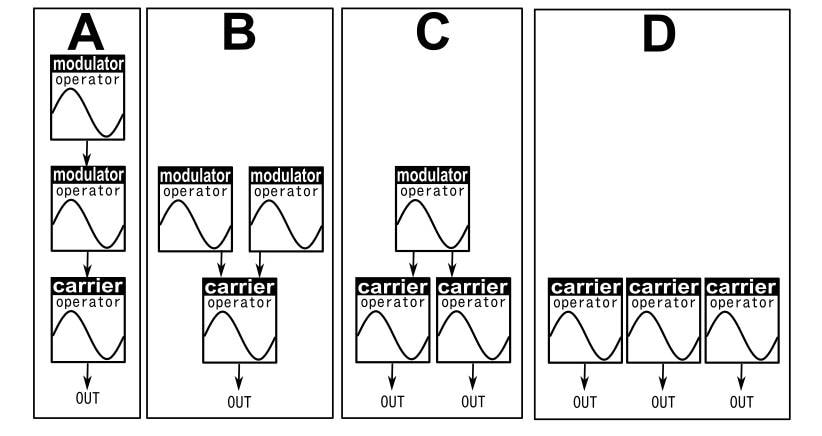
Another feature of FM sound sources is that they can create a huge number of tone variations with a small amount of data and a relatively light computational cost. From an engineer's point of view, this is a beautiful thing.
The FM sound source was researched by John Chowning of Stanford University in the 1970s, and it was patented and commercialized by Yamaha in the 1980s. The release of the DX7 in particular shocked all quarters.
1983 YAMAHA DX7 248,000 yen
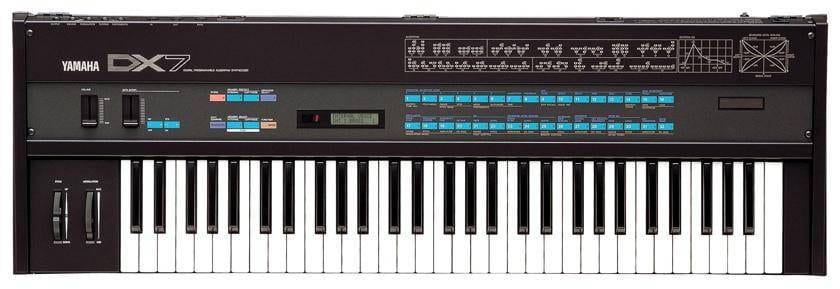
The number of simultaneous 16 notes was a leap forward at that time, and the piano could be played without any discomfort. It was also able to create a brighter, metallic sound that was difficult to achieve with analog synthesizers. It also had outstanding strength and weakness expression, making it an alternative to the electric piano and marking a new direction for synthesizers. It was also relatively inexpensive, making it just barely affordable for amateurs.
In the musical instrument industry, the DX7's success and advanced technology led companies to rush ahead with the development of digital synthesizers.
The History of FM Sound Generators to the Present
In the early 1980s, the DX7 brought the FM sound source into the limelight as a musical instrument, and its meteoric rise continued into the 1990s, with the DX7 electric piano becoming the most successful FM sound source. This trend led to its adoption as the sound source for electronic pianos, and the electronic piano was born. Yamaha's early electronic pianos were FM sound sources until 1986, when they were replaced by PCM sound sources. The electronic pianos I personally own still use the FM sound sources from this period.
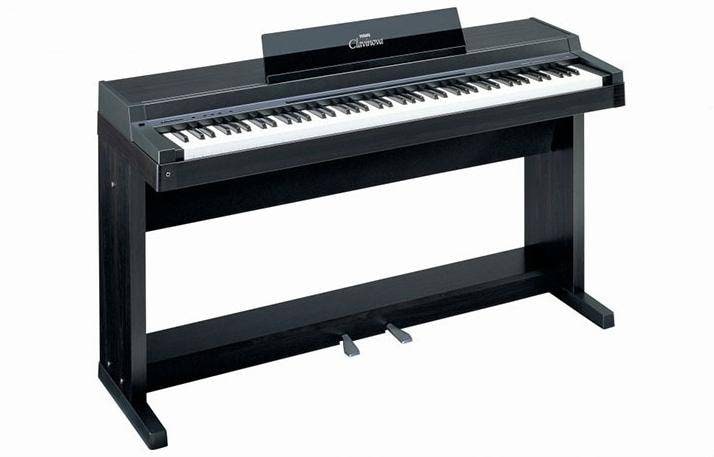
The FM sound source's lowered price and tonal variation soon led to its use not only in the music industry, but also in personal computers, arcade games, and other applications.
SHARP X68000
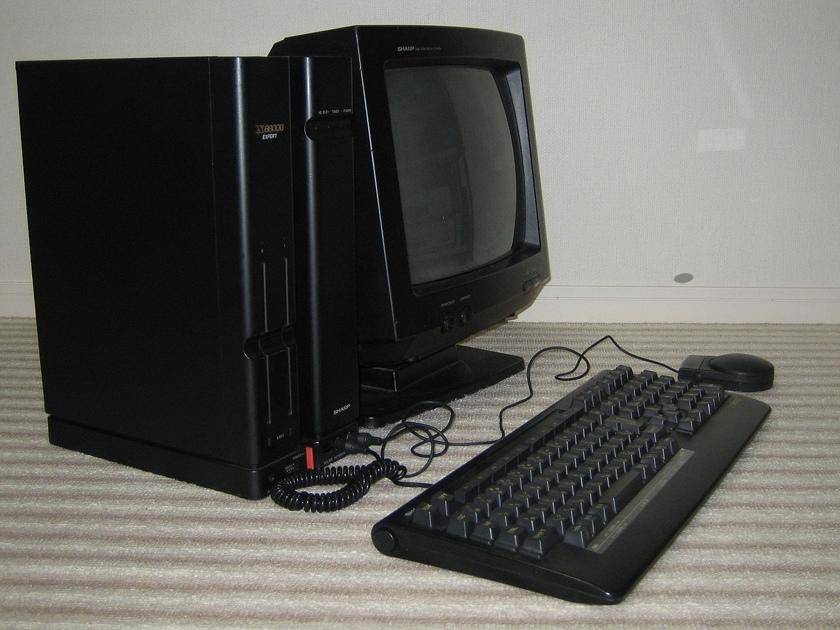
Fujitsu FM TOWNS
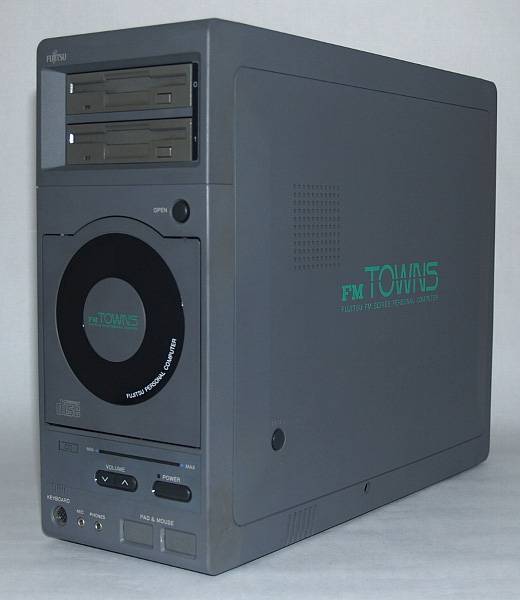
FM TOWNS, CC BY-SA 3.0 (Quoted from Wikipedia)
Capcom Street Fighter

Streetfighter1, CC BY-SA 3.0 (Quoted from Wikipedia)
At the time, FM sound sources were only as good as the hardware, so Yamaha supplied a variety of FM sound chips. The photo below shows the FM sound chips of four operators.
YAMAHA-YM2164
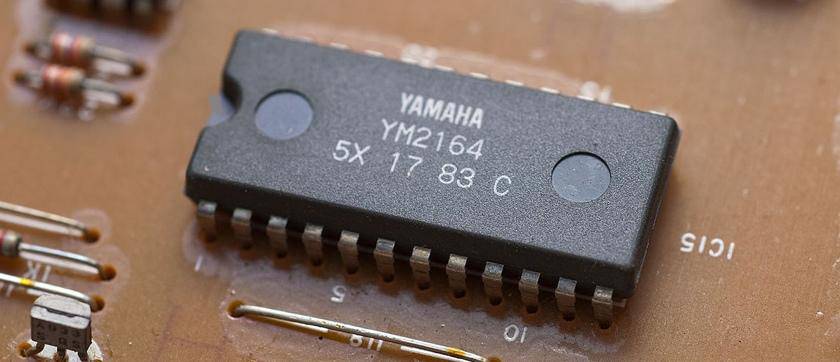
YAMAHA-YM2164, CC BY-SA 3.0 (quoted from Wikipedia)
The sound of FM sound source seems to be a nostalgic sound for those who played games back in the day, but FM sound sources tend to have their own characteristics, and although various sounds can be created, they are all said to sound like FM. Although it’s not always liked, the individuality of the sound is valuable.
Composer Yuzo Ancient even developed his own drivers and composed music that really made use of the 4OP FM sound source to its fullest potential. Listening to his work, it is so rich that it is hard to believe that it is an FM sound source. Even today, he is still strongly committed to FM sound sources, and there is a project called MUCOM88 that can reproduce the drivers of those days on modern computers.
As cell phones began to become popular, demand for ringtones led to the adoption of FM sound chips. Yamaha, which continued to make rapid progress, also built a chip factory to produce the chips.
NEC N502it
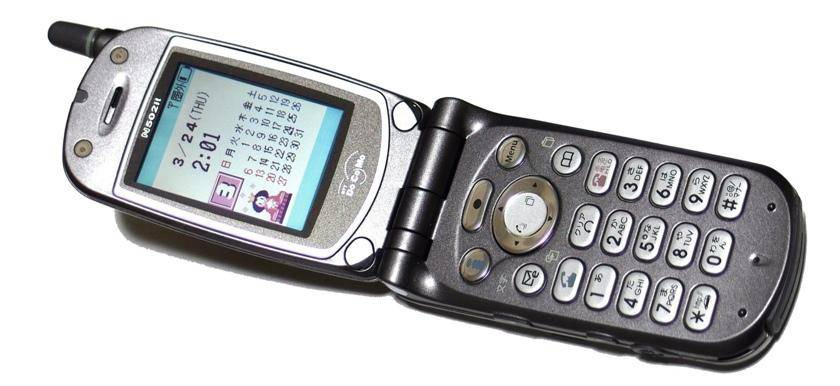
NTT_DoCoMo_mova_N502it, CC BY-SA 4.0 (quoted from Wikipedia)
By the mid-1990s, however, the musical instrument industry had become PCM-centric, and FM sound sources were rarely used. The game industry will gradually eliminate the need for sound chips as sound sources become more and more software-based. The Yamaha chip factory was sold after only about a year of operation.
In the 2000s, FM sound sources were no longer seen at all, but with the analog boom, FM sound sources were also making a comeback in secret. FM sound sources seem to fascinate enthusiasts. Personally, my favorite sound source is the FM sound source, and I think its appeal lies in its simplicity, minimalism, and depth.
Now that the patent has expired, many companies are partially adopting FM sound sources. FM modulation has become commonplace, especially with soft sound sources.
The following are pure hardware FM synths currently available.
This is a mini keyboard, a 4-op FM sound source, but it has a high degree of freedom in sound creation, as it has other types of FM sound sources than sine wave, and it also has a degree of freedom in feedback.
This is a modern, full-fledged FM synthesizer. It is easy to operate, and with its filters and effects, it can create natural sounds that could not be created with conventional FM instruments.
This is compatible with DX7, but only up to 6 chords.
There are many FM soft synths. Here is one free one.
dexed
Free dexed is a clone of DX7, and it is easy to handle as you can see all the parameters at a glance. It can also load DX7 presets, and it has filters that the DX7 does not have. However, portamento is not available.
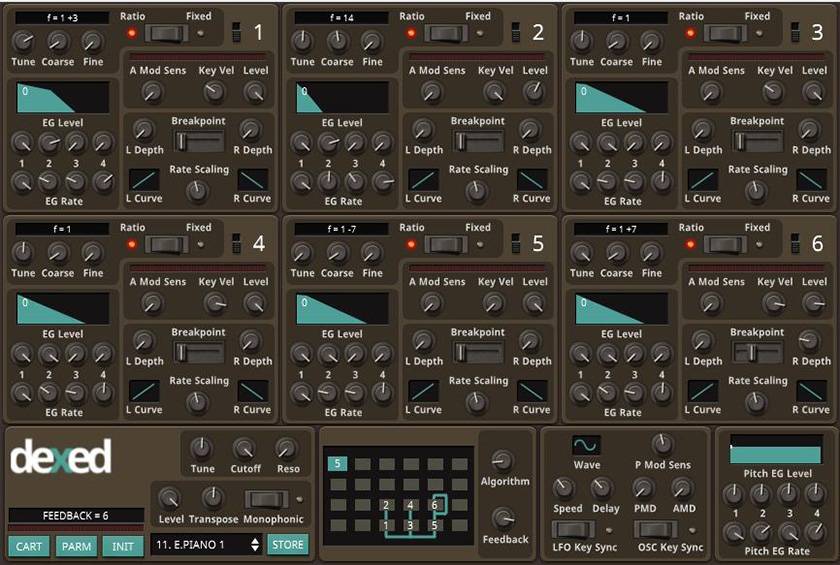
In the next issue, I will explain how to create FM sound.
The “sound & person” column is made up of contributions from you.
For details about contributing, click here.





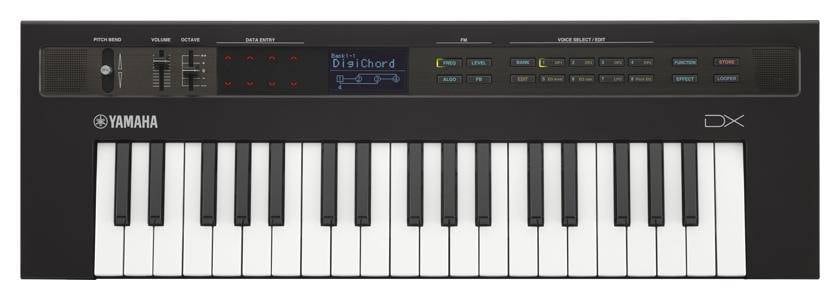
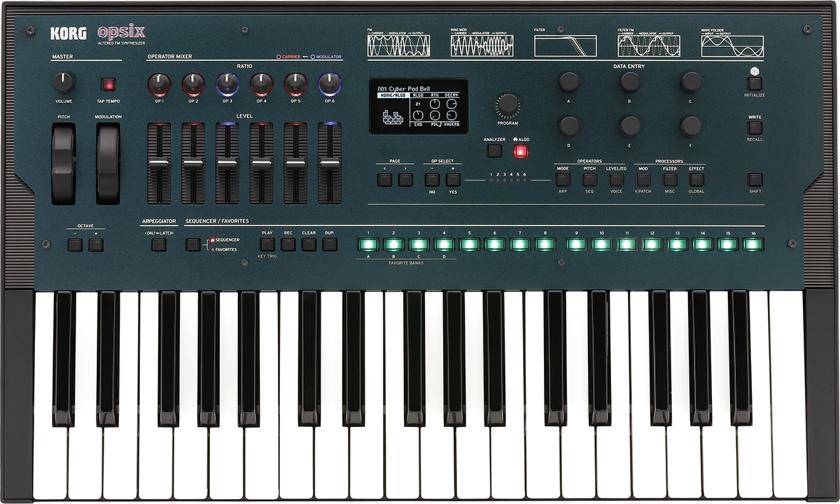
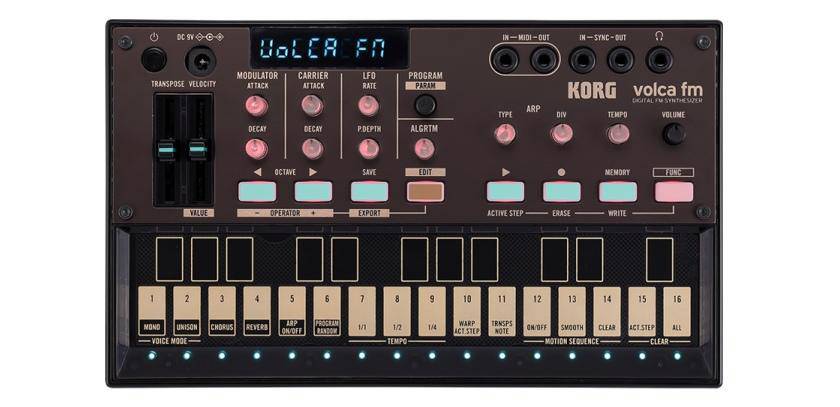

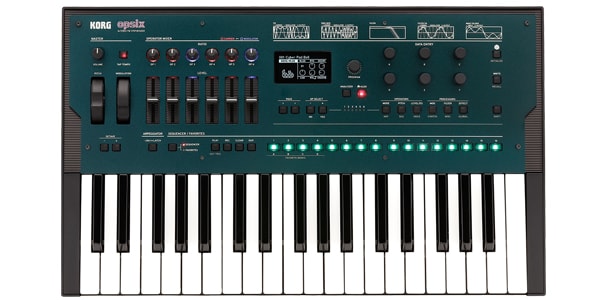
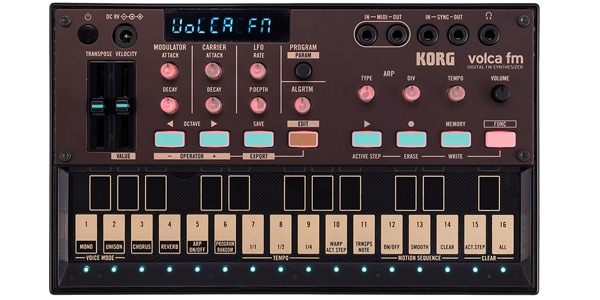
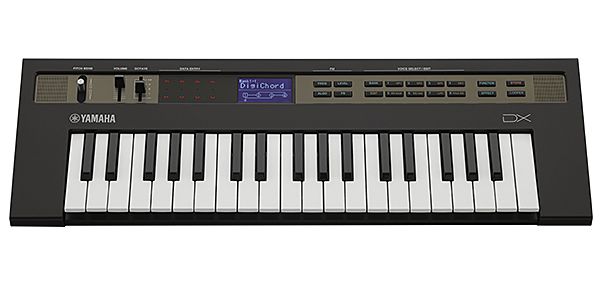





![Enchanting Instruments 66 - Electronic Sound Source Mechanism 6: Sampling Tone Generator 2 [PCM]](/contents/uploads/thumbs/5/2023/10/20231007_5_24147_1.jpg)
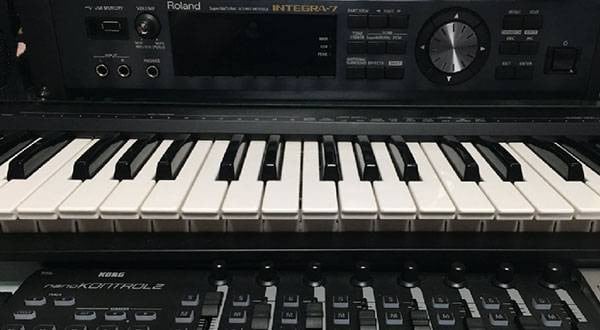
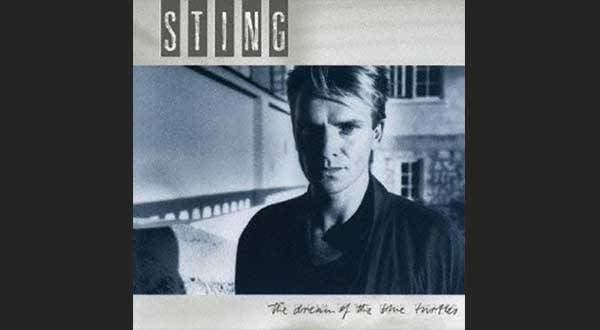

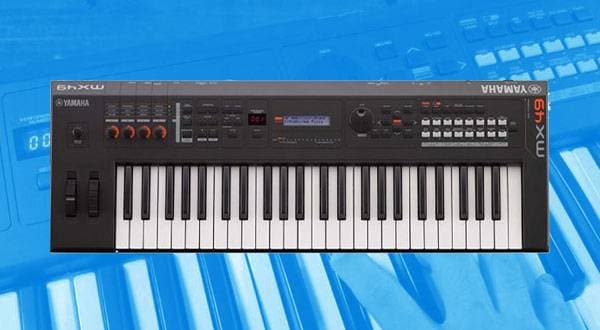
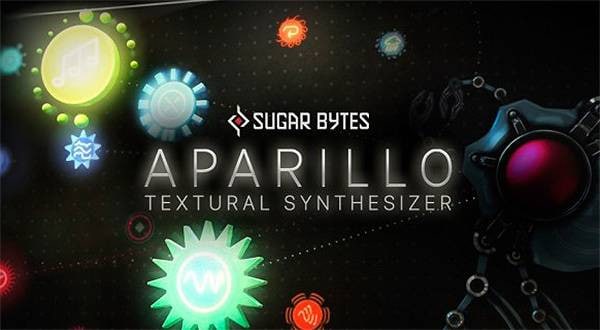
 DTMセール情報まとめ
DTMセール情報まとめ
 DTMに必要な機材
DTMに必要な機材
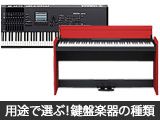 用途で選ぶ!鍵盤楽器の種類
用途で選ぶ!鍵盤楽器の種類
 キーボードスタートガイド
キーボードスタートガイド
 キーボード・ピアノ講座
キーボード・ピアノ講座
 DTM・DAW購入ガイド
DTM・DAW購入ガイド















